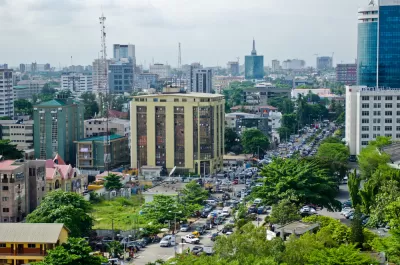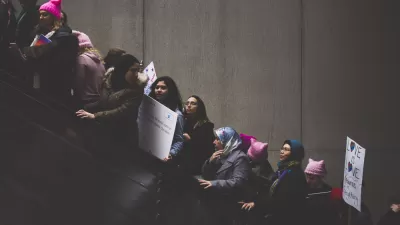Rising populations and political challenges complicate the future development of Africa's major metropolitan centers.

The traffic-choked streets of Lagos, Nigeria may be a harbinger of the future in the continent's major cities, many of which are experiencing explosive population growth and urbanization, in some cases with little comprehensive planning to mitigate the effects of unchecked growth. An article by Max Bearak, Dylan Moriarty, and Júlia Ledur describes the projected growth of five African cities, the legacy of colonial planning, and the lessons they hold for the future of the continent.
In Lagos, Nigeria, overcrowded housing conditions and inadequate infrastructure force many people to live in densely packed quarters lacking basic utilities. In countries like Sudan and Congo, war and other political crises push refugees into cities, creating a massive influx of people seeking safety and opportunities, exacerbating poverty in urban centers.
Meanwhile, China is gaining influence in African nations as it provides government-backed loans to support infrastructure projects in cities such as Djibouti, Luanda, Angola, and Lubumbashi, Congo. Overall, "Chinese institutions invested more than $200 billion in the transportation and power sectors across Africa between 2000 and 2017, according to the AidData initiative at William & Mary, the Virginia college."
Highlighting the urgency of the need for improved infrastructure and institutional reform, the article notes that "Several recent studies project that by the end of this century, Africa will be the only continent experiencing population growth. Thirteen of the world’s 20 biggest urban areas will be in Africa — up from just two today — as will more than a third of the world’s population."
FULL STORY: AFRICA’S RISING CITIES

Planetizen Federal Action Tracker
A weekly monitor of how Trump’s orders and actions are impacting planners and planning in America.

Maui's Vacation Rental Debate Turns Ugly
Verbal attacks, misinformation campaigns and fistfights plague a high-stakes debate to convert thousands of vacation rentals into long-term housing.

Restaurant Patios Were a Pandemic Win — Why Were They so Hard to Keep?
Social distancing requirements and changes in travel patterns prompted cities to pilot new uses for street and sidewalk space. Then it got complicated.

In California Battle of Housing vs. Environment, Housing Just Won
A new state law significantly limits the power of CEQA, an environmental review law that served as a powerful tool for blocking new development.

Boulder Eliminates Parking Minimums Citywide
Officials estimate the cost of building a single underground parking space at up to $100,000.

Orange County, Florida Adopts Largest US “Sprawl Repair” Code
The ‘Orange Code’ seeks to rectify decades of sprawl-inducing, car-oriented development.
Urban Design for Planners 1: Software Tools
This six-course series explores essential urban design concepts using open source software and equips planners with the tools they need to participate fully in the urban design process.
Planning for Universal Design
Learn the tools for implementing Universal Design in planning regulations.
Heyer Gruel & Associates PA
JM Goldson LLC
Custer County Colorado
City of Camden Redevelopment Agency
City of Astoria
Transportation Research & Education Center (TREC) at Portland State University
Jefferson Parish Government
Camden Redevelopment Agency
City of Claremont



























